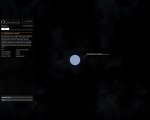Sadly, I don't have so much time for ED these days as I'd like to but yes, I'll try to illuminate you, again

(possible lack of success is entirely on me, of course)
1. Mentioned C-types issue (actually carbon stars issue), white dwarfs and M-type giants were just poor examples because I couldn't remember better ones - they are poor because they can confuse only inexperienced explorers (I am not sure if it's poor in case of white dwarfs). However:
- it's beside the point how many C-types we have in the book currently because a new type can be discovered (in-game) any moment and it will be in the book, then
- you can't even be sure we know all carbon star types so how you could be sure their descriptions are clear (I still say they are unclear for an inexperienced explorer)
- it's entirely possible that more types have already been seen but their descriptions are so misleading (as in case of class II gas giants in the past) and their discoverers have been so focused on those descriptions that they have not spotted anything new
- my point is a general one, see below
2. Your find with F/G supergiants is excellent to prove my point (and I thank you for that):
- if we haven't realized for so long that they are mismatched then it's entirely possible there are more similar cases (not only F/G supergiants) and we have just missed them focusing on descriptions too much
- if we attached just one additional (easy to take) picture from the Galaxy Map to our evidence of star records then what you have just found we would have spotted long ago and it wouldn't have been needed to comb through records to find wrong ones
- if the issue was spotted long ago then perhaps it would already have been corrected by FDevs
Why do you trust descriptions so much when it is proven again and again that they are confusing sometimes?
















